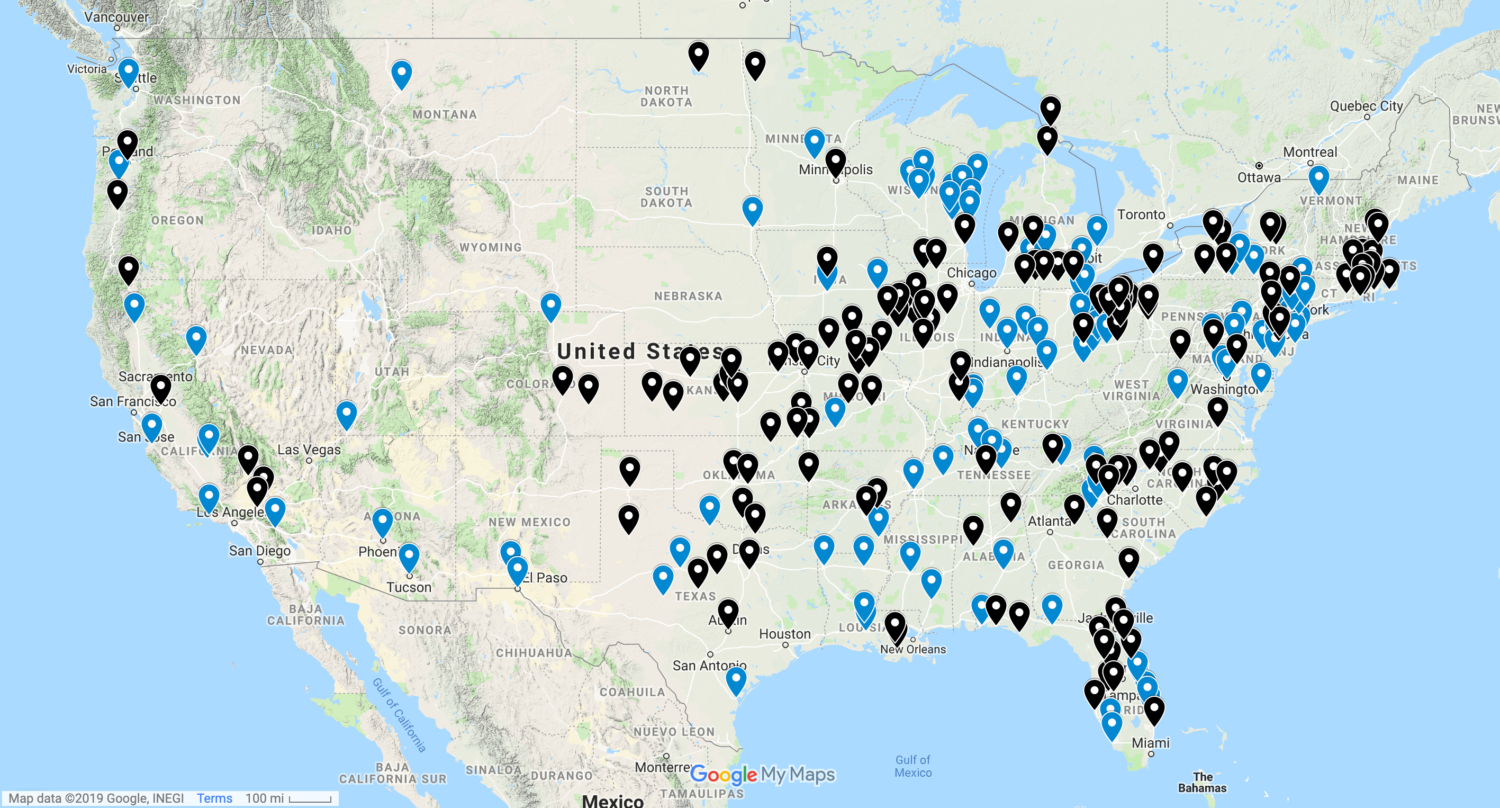When the Founding Fathers placed the First Amendment to the Constitution first, I think that was by design. That amendment, while protecting freedom of the press, also protects freedom of speech, freedom of religion, freedom of assembly and freedom to petition the government for redress of grievances.
Marketplace of Ideas
While the press was fiery and openly partisan in the Founding Fathers’ time, the idea of a free press was to give the electorate exposure to a marketplace of ideas, not just one idea coming from a king or monarch. But do we have that today? I hope so. But I’m worried about the concentration of media ownership.
Who Owns the Media?
The weekly newspaper I grew up on, The Gallatin North Missourian, has in its long history been individually owned. It has never been not part of a chain. That’s the case with many small daily and weekly newspapers. The Hays Free Press, up the road from me in Kyle, Texas, is family owned. It’s often easy to tell the independent media. They generally have lively news and opinions sections. The San Marcos Daily Record, in the town where I live, is owned by a small chain. It has a very small staff and weak opinions page.
And for some perspective, today six companies, six, control 90 percent of what we watch, listen to and read. This is down from 50 companies in 1983.
Who Are They?
These media kings are:
–Comcast (the largest cable provider and owner of a number of NBC affiliates),
–Newscorp (Fox, the New York Post and the Wall Street Journal, all owned by Rupert Murdoch),
–Disney (ABC and ESPN),
–Viacom (MTV and Nickelodeon),
–Time-Warner (CNN and Time magazine)
–CBS.
But media “princes” are among the giants. They include:
–Clear Channel, which owns 1,200 radio stations,
–Hearst, a family-owned chain of newspapers, magazines, television stations and channels. These include the San Francisco Chronicle, the Houston Chronicle, the San Antonio Express-News, Seattle Post-Intelligencer, Cosmopolitan, Esquire and 50 percent of A&E Networks, co-owned with Disney.
–And Gannett, publisher of USA Today, the largest newspaper chain, with 1,090 daily and weekly newspapers. It may soon be purchased by GateHouse, owner of the St. Louis Post-Dispatch, Austin American-Statesman and 826 other dailies and weeklies.
The Map
The map at the start of this post shows the concentration of newspaper ownership that would be brought about by the GateHouse purchase. The GateHouse holdings are in black and Gannett in blue. But, again, this is a tiny part of our media concentration problem.
The Problem?
The Founding Fathers never expected any of this–films, music, the Internet, the decline of newspapers and other traditional media. So today the free marketplace of ideas is in peril. As media are concentrated into fewer hands, there may be less room for new thoughts and ideas, viewpoints and perspectives. It is these things that the democracy relies upon in order for citizens to make good decisions at the ballot box and about other aspects of their lives.
Deregulation and the Media
The federal government used to limit media ownership in geographic areas. For example, a newspaper and television station in the same market could not be owned by the same entity. But a round of deregulation over the past couple of decades have eroded that. Economic factors have done the same. In earlier times, the Federal Communications Commission recognized that while newspapers could be started anywhere, any time, the number of signals available for broadcast were limited. That is why the above regulation was in place. Later FCC thinking was that the market could control ownership so deregulation occurred and concentration began.
The Reason These Companies are in Business
Why are these companies in business? The newspapers in Colonial America served as fuel for the Revolution, contained few ads and were handed from person to person. But the news and entertainment media written about here place the bottom line first. Most people know that. And it can lead readers, listeners and viewers to wonder about the validity of their information. Are we getting all the news we need? Is it presented objectively? Does advertising influence content?
My Advice
I rely on the New York Times, The Washington Post, CNN, ABC, NBC, MSNBC and CBS for news, along with other sources I look up online. Here are some sources a younger friend mentioned recently:
–The Young Turks: https://tyt.com/ They’re an online news outlet. Wikipedia classifies them as progressive and left.–All Sides: https://www.allsides.com/unbiased-balanced-news. They acknowledge that bias is present in the media and give stories from left, right, and center on the same topic. –And this site has a list of independent and foreign sources, https://soapboxie.com/social-issues/A-Real-Need-for- the-Real-News
What I advise my online college students is not to rely on one source. And let’s hope the concentration doesn’t become so great that we have just one or two sources. Thank goodness, the Internet may make that impossible!

